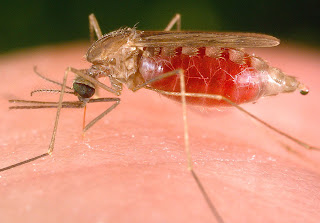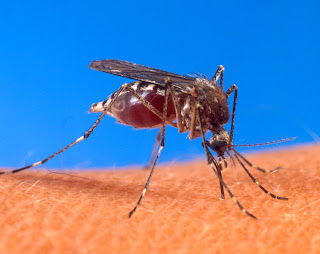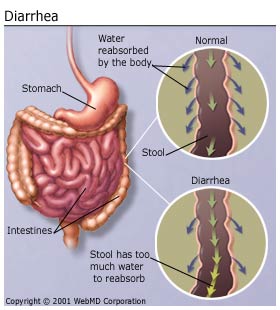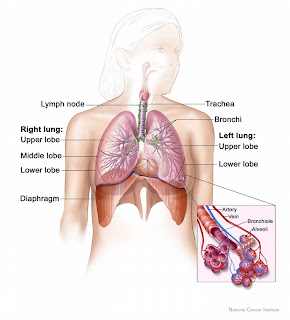1. Definition of Therapeutic Communication
Therapeutic communication is consciously planned communication, aims and activities focused on healing the patient (Indrawati, 2003: 48).
Therapeutic communication including interpersonal communication with each other provide a starting point between nurse and patient. Fundamental problems of this communication is a mutual need between the nurses with patients, so it can be categorized into a personal communication between nurses and patients, nurses and patients to receive assistance to help (Indrawati, 2003: 48).
2. Benefits of Therapeutic Communication
a. Encourage and advocate cooperation between nurses and patients
b. Identify
c. Revealing feelings and assess problems
d. Evaluation of actions taken by nurses
3. Therapeutic Communication Objectives
a. Helping patients to clarify and reduce the burden of feelings and thoughts
b. Can take effective measures for patients
c. Help influence other people, physical environment, and yourself
So, the conclusion is the purpose of therapeutic communication quality of nursing care provided to clients who greatly influenced by the quality of the relationship between nurse and client. If nurses nurses do not pay attention to this, the relationship between the nurse and the client is not a relationship that provides a therapeutic effect that accelerates healing of the client, but the normal social relationships.
4. Type of Therapeutic Communication
According to Potter and Perry (1993), Swansburg (1990), Szilagyi (1984), and Tappen (1995) in the Ancient (2003) there are three types of communication that is verbal, written, verbal and non-manifested as therapeutic.
1) Verbal Communication
The most common type of communication used in nursing care in hospitals is mainly verbal exchange inforamasi talk with face to face. Verbal communication is usually more accurate and timely. Words are tools or symbols that describe the object, observation and memory. Often also to convey a hidden meaning, and test one's interests. The advantage of verbal communication in face to face which allows each individual to respond directly.
Effective verbal communication should:
a. Clear and concise
Effective communication should be simple, short and direct. The fewer the words used, the less likelihood of confusion. Re an important part of the message. Receipt of the message need to know what, why, how, when, who, and where. Concise, using words that menekspresikan idea is simple.
b. Vocabulary (easy to understand)
Many technical terms used in keperwatan and medicine, and if these are used by the nurse, the client can become confused and follow directions or to learn important information. Say the message with the terms understood by the client.
c. Denotative and connotative meanings
Denotative meaning give in the same sense of the word is used, while the connotative meaning is pikirab, feelings or ideas contained in a word. When communicating with clients, nurses must be careful to choose words that are not easy to incorrectly interpret, especially very important when explaining the purpose of therapy, treatment and condition of the client.
d. Break and a chance to talk
The speed and tempo of the right to speak, helped determine the success of verbal communication. Nurses should not speak so quickly that the words are not clear. Break should be used to emphasize certain things, allow time for the listener to listen and understand the meaning of the word. Nurses also can ask the audience if he speaks too slowly or too fast and need to be repeated.
e. Time and relevance
The right time is crucial to grasp the message. Despite the spoken message is clear and concise, but not the right time can menhalangi receipt of the message accurately. Similarly, verbal communication will be more meaningful if the message relates to the interests and needs of clients.
f. Humor
Dugan (1989) in the Ancient (2003) says that laughter helps reduce tension and pain caused by stress, and improve the success of nurses in providing emotional support to clients. Sullivan and Deane (1988) in the Ancient (2006) reported that humor stimulates the production of catecholamines and hormones that induce a feeling healthy, increase tolerance to pain, reduce anxiety, facilitate relaxation and breathing and use humor to mask her fear and discomfort or cover up its inability to communicating with clients.
2) Written Communication
Written communication is one form of communication that is often used in business, such as communication through correspondence, making memos, reports, newspaper advertisements and others.
3) Non-Verbal Communication
Non-verbal communication is the transfer of a message without using words. Is the most convincing way to convey messages to others. Nurses who detect a condition and determine the need for nursing care.
Morris (1977) and Liliweni (2004) divides the non-verbal messages as follows:
a. Kinesik
Kinesik is non-verbal messages that are implemented in the form of body language cues. The extension is not only using verbal words but also reinforce the messages in sign language to tell a dangerous disease, cures, how to wear condoms, how to mix drugs, and others.
b. Proksemik
Proksemik ie non-verbal language indicated by the "space" and "distance" between individuals when communicating with other people or between individuals with the object.
c. Haptik
Haptik often called proxemics zero, meaning there is no longer the distance between two people when communicating. On that basis then there is non-verbal communication expert who said haptik was the same as patting, groping, holding, stroking and pinching. Haptik communicate your relationship with someone.
d. Paralinguistik
Paralinguistik includes any use of the voice so that he will if we are to interpret the symbols verbal.Mengritik others usually expressed directly but with an anecdote.
e. Artifacts
Motorcycles, cars, refrigerators, clothing, televisions, computers may be just the object. However, in certain social situations objects that give a message to others. We can guess a person's social status with clothing or cars they use.
f. Logo and Colors
Creative designers to create logos in education is the work of business communications, but keija model m can be replicated in health communication. Usually the logo is designed to be a symbol on a work organization or product in an organization., Particularly for private organizations. Forms are generally small logo with a choice of shapes, colors and fonts that contain the vision and mission of the organization.
g. Display Physical Body
It is a stamp body type or color that we give to that person. One of the virtues messages or health information is persuasive, that is how we design the message in such a way so as to influence others so that they can find out information, enjoy the information, decide to buy or reject products are distributed by source of business information. (Liliweri, 2007:108).
5. Characteristics of Therapeutic Communication
a. Ikhlas (Genuiness)
All the negative feelings experienced by the patient must be accepted and an individual approach to verbal and non-verbal bentuan will give to the patient to communicate the exact condition.
b. Empathy (Empathy)
An honest attitude in accepting the patient's condition. Objective in the assessment of the condition of the patient and not excessive.
c. Warm (Warmth)
The warmth and permissiveness which is expected given the patient can provide and realize his ideas without fear, so that patients can express their feelings more deeply.
6. Phases in Therapeutic Communication
a. Orientation (Orientation)
In this phase of relationship is still shallow and the communication that takes place is still extracting information between nurses and patients. This phase is characterized by five main activities, namely testing, building trust, identification and goals, clarification of roles, and contract formation.
b. Work (Working)
In this phase of nurses required to work hard to meet the goals set in the orientation phase. This phase consists of two main activities, which brings together the communication process with measures to build an atmosphere of care and support for the process of change.
c. Settlement (Termination)
In this phase, nurses encourage patients to give an assessment of the goals have been achieved, that goal is achieved is the condition of mutually beneficial and satisfying. Activities in this phase is the assessment of goal attainment and separation (Arwani, 2003:21).
7. Inhibiting factors Therapeutic Communication
a. Development
b. Perception
c. Value
d. Socio-cultural background
e. Emotion
f. Gender
g. Knowledge
h. Roles and Relationships
i. Environment
j. Distance
k. Self-image
l. Physical Condition
Summary of Therapeutic Communication
Background: Therapeutic Communication is a tool to foster the therapeutic relationship because of the communication includes the attainment of information, exchange thoughts and feelings. Terpeutik communication process often includes the ability and genuine commitment on the part of nurses to nursing mebentuk clients achieve success together.
Peenelitian goal: To find out how the application of therapeutic communication nurse in providing nursing actions in Palu, Central Sulawesi Undata Hospital.
Methods: This type of communication research is non-therapeutic experiments with sectionak approch. Samples were taken from each room with a cluster sampling technique then the sample was drawn by random sampling of 30%. The number of samples as many as 68 nurses. The instrument used was the observation sheet check list. Data were analyzed with a percentage formula. Research conducted from the fourth week of August to October 2006.




